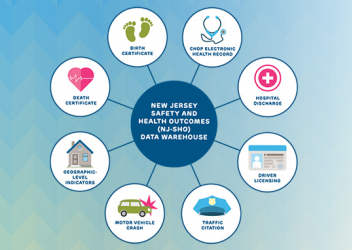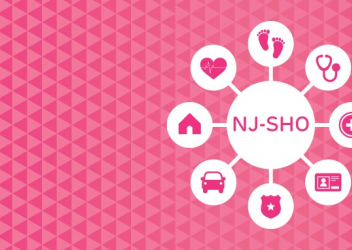Research In Action
Research In Action
Breadcrumb

I was recently interviewed about my work to develop the New Jersey Safety and Health Outcomes (NJ-SHO) Data Warehouse for Cornerstone, the Children's Hospital of Philadelphia (CHOP) Research Institute's blog. An abbreviated version of the blog post is included below. Click here to read the full blog post on the research institute's website.
Looking at a crash report in a single database, researchers often get just a snapshot in time: they see who and what was involved, how the crash occurred, and the location and time of day. Less often do researchers get the details to fill in the larger picture: How long has each individual involved in the crash been driving? Has this person been in crashes before? What other underlying factors may increase crash risk?
Previous research has shown that these questions matter – especially when it comes to understanding why crashes happen in order to help prevent them. “Identifying crash risk factors and long-term outcomes for different drivers is enhancing our understanding of why and how crashes happen and is informing driver safety policy across the country,” said Allison E. Curry, PhD, MPH, an assistant professor of Pediatrics at CHOP's Center for Injury Research and Prevention (CIRP) and Division of Emergency Medicine.
When Linking Databases Leads to Discovery
According to research she conducted with her team using the New Jersey Safety and Health Outcomes Data Warehouse (NJ-SHO), a young driver’s crash risk changes significantly during the first few years of driving, and young drivers with attention-deficit hyperactivity disorder (ADHD) are more likely to crash or engage in risky driving behaviors than those without ADHD. And older drivers tend to have a lower crash rate – but higher fatal crash rate – than middle-aged drivers.
Dr. Curry has led the creation of the NJ-SHO over the last decade, developing it into a key methodological contribution to advance injury prevention research and improve public health outcomes.This unique treasure trove of data links 80 million public health records for about 20 million NJ residents across eight administrative databases and counting, including driver licensing; motor vehicle crashes; traffic citations; childhood medical records; inpatient, outpatient, and emergency room visits; and vital statistics data.
Since it provides longitudinal information covering the pre- and post-injury period of a crash event, researchers have the opportunity to analyze and consider a number of potentially confluent factors such as age, licensing history, or medical background to answer urgent research questions that could not be previously addressed due to a lack of appropriate data.
The findings that have resulted from tapping into the NJ-SHO over the years illustrate just how powerful the linking of data can be. Since 2015, Dr. Curry and her colleagues have published dozens of peer-reviewed manuscripts using the NJ-SHO Data Warehouse that have had demonstrable impact on young driver safety at the national level. Dr. Curry also received numerous grant awards for this program, the most recent being a National Institutes of Health grant to measure driver exposure (the extent to which drivers actually drive) and develop methods to account for exposure in crash risk estimates.
With more diverse data recently added to the NJ-SHO, Dr. Curry continues to create collaborations on research that will truly benefit from linking health information across databases. “We’ve intentionally designed the NJ-SHO warehouse in a way that it can help answer novel research questions on numerous topics,” she said. “We’d love to collaborate with researchers who may be interested in using these data to help advance knowledge in their field.”




